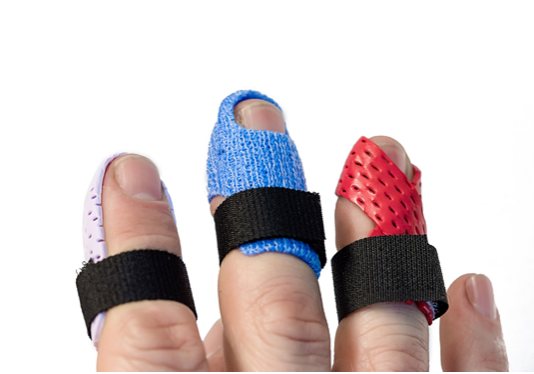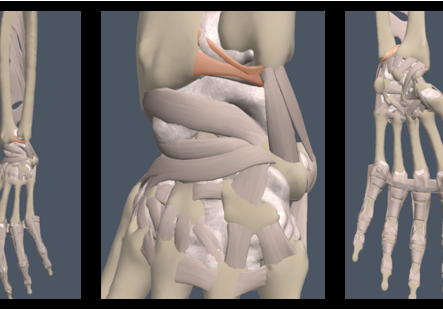Educación continua en terapia ocupacional y física: práctica basada en la evidencia y alfabetización en investigación
archivado en Terapia ocupacional
Introduction: The Role of Research in Modern Occupational and Physical Therapy
In today’s healthcare landscape, staying updated isn’t a luxury—it’s a necessity. As new research floods academic journals and treatment methodologies evolve, therapists must stay ahead. This is where occupational and educación continua en fisioterapia comes in. More specifically, courses that emphasize evidence-based practice (EBP) and research literacy are essential tools in helping clinicians translate academic findings into meaningful patient outcomes.
Why Evidence-Based Practice Matters in Clinical Settings
Improving Patient Outcomes Through Evidence Integration
Evidence-based practice (EBP) combines clinical expertise with the best available research. Therapists who use EBP methods deliver more accurate, efficient, and patient-centered care. By applying proven techniques, they reduce trial-and-error in treatment plans and improve recovery timelines.
Bridging the Gap Between Theory and Practice
Too often, therapists attend a seminar or read an article but never apply the information in their clinics. A well-structured occupational and educación continua en fisioterapia course addresses this gap, teaching clinicians how to integrate insights from current research into their unique patient populations.
What is Research Literacy in Occupational and Physical Therapy?
Key Components of Research Literacy
Research literacy involves the ability to read, understand, and critically appraise scientific literature. It includes:
- Understanding study design and methodology
- Recognizing bias and conflicts of interest
- Interpreting statistics and data visualization
Common Barriers to Research Understanding Among Therapists
Despite best intentions, many therapists struggle with technical jargon, dense statistical analysis, and limited access to full research articles. This gap widens over time unless clinicians pursue targeted occupational and educación continua en fisioterapia programs focused on EBP.
How Occupational and Physical Therapy Continuing Education Bridges the Knowledge Gap
Accredited CEU Courses Focused on Evidence-Based Practice
Modern CEU (continuing education unit) programs go beyond traditional lectures. They involve case-based learning, peer-reviewed literature analysis, and scenario simulations that reflect real-world challenges. Accredited programs often partner with universities or professional organizations to ensure rigor.
Real-World Application in Daily Clinical Decision-Making
These courses are designed to equip therapists with practical tools. By simulating decision-making environments, learners gain confidence in applying evidence to diverse clinical situations—whether treating chronic pain or post-surgical recovery.
Core Skills Taught in Evidence-Based Occupational and Physical Therapy Courses
Critical Appraisal of Scientific Literature
One of the first lessons in any EBP course is how to critically read journal articles. This means evaluating sample sizes, methodologies, outcome measures, and results to judge the study’s relevance and validity.
Understanding Study Design and Statistical Methods
CEU courses often cover:
- Randomized controlled trials (RCTs)
- Cohort and case-control studies
- P-values, confidence intervals, and effect sizes
This empowers therapists to make data-driven decisions rather than relying solely on anecdotal evidence.
Applying Research Findings to Treatment Planning
Learning how to integrate research into a patient’s care plan ensures that treatments are both effective and current. A therapist trained in EBP knows when to adapt protocols based on new insights and patient responses.
Technological Tools and Platforms Supporting EBP Learning
Online Databases and Journals
Access to platforms like PubMed, PEDro, and Cochrane Library helps therapists stay current. Many occupational and educación continua en fisioterapia programs now include guided literature reviews using these databases.
Interactive Modules and Simulations
Hands-on learning through digital simulations and interactive videos makes complex topics more digestible. These tools often include virtual patients and branching scenarios to mimic clinical decision-making in real-time.
The Therapist’s Journey: From Novice to Evidence-Based Expert
Case Study: Integrating Research into Daily Practice
Consider Sarah, a mid-career therapist treating post-stroke patients. Through a CEU course on neural plasticity, she learned about constraint-induced movement therapy. She applied it with a patient and saw faster functional gains than with previous methods.
Peer Collaboration and Mentorship Programs
Many programs now offer forums, discussion groups, and mentorship opportunities. These create a community of practice where therapists share insights, ask questions, and refine their application of evidence-based strategies.
Benefits of Evidence-Based Occupational and Physical Therapy Continuing Education
Enhanced Confidence and Professional Growth
Therapists who master research literacy often feel more confident in their clinical decisions. They become leaders in their practices and may take on roles in teaching, policy-making, or research.
Increased Patient Satisfaction and Outcomes
Informed decisions lead to better patient communication, fewer relapses, and higher satisfaction scores. Patients trust therapists who can explain why they’re choosing a particular intervention.
How to Choose the Right Continuing Education Program
Accreditation and Curriculum Standards
Always choose programs that are approved by state boards or national organizations like the AOTA and APTA. Look for curricula that include EBP modules, research projects, and clinical application segments.
Reputation, Reviews, and Faculty Expertise
Programs led by experienced clinicians or researchers tend to offer richer, more practical insights. Read reviews and testimonials before enrolling.
Challenges in Implementing Evidence-Based Practice
Time Constraints and Workload Issues
Many therapists struggle to find time for reading and research. Continuing education can help by streamlining the learning process and integrating research into workflows.
Cultural Resistance Within Clinical Teams
Changing treatment approaches based on new evidence sometimes meets resistance. Courses often include training on how to advocate for change and educate peers.
Future Trends in Occupational and Physical Therapy Continuing Education
Personalized Learning Paths Using AI and Analytics
Adaptive learning platforms are transforming CEU courses. These platforms use algorithms to personalize the learning experience based on user performance, learning style, and goals.
Global Collaboration in EBP Communities
Cross-border webinars, international research forums, and virtual case conferences are now common. These initiatives expose therapists to a global view of care, improving cultural competence and breadth of knowledge.
FAQs: Occupational and Physical Therapy Continuing Education and Research Literacy
Q1: Why is evidence-based practice essential in occupational and physical therapy?
A: It ensures that treatments are backed by scientific research, enhancing effectiveness, safety, and patient outcomes.
Q2: What’s included in a typical occupational and physical therapy continuing education course?
A: CEU courses often include modules on research appraisal, study design, clinical application, and emerging therapies.
Q3: Can I take these courses online?
A: Yes, many high-quality programs are now available virtually, often with interactive and hands-on components.
Q4: How do I know if a CEU course is accredited?
A: Check if it’s approved by organizations like the APTA, state licensing boards, or accredited universities.
Q5: Do these courses count toward my license renewal?
A: Yes, most accredited occupational and educación continua en fisioterapia courses fulfill licensure renewal requirements.
Conclusion: Building a Stronger Foundation Through Research Literacy
Incorporating evidence-based practice into everyday therapy isn’t just good for patients—it elevates the profession. By engaging in occupational and educación continua en fisioterapia focused on research literacy, therapists empower themselves to make informed decisions, advocate for best practices, and ultimately transform patient care. As the field of occupational and physical therapy continues to evolve, staying research-literate isn’t optional — it’s essential.
Más para leer
Más de 5 férulas comunes para dedos en mazo
Las órtesis de dedo pueden ser difíciles y la órtesis de dedo en martillo no es una excepción. El protocolo para 15 grados de extensión DIP con dedos en martillo es complicado de manejar mientras se hace una férula. Las férulas pequeñas en los dedos meñiques también son difíciles de conseguir del tamaño adecuado y con correas en los lugares correctos. Pregúntale a cualquier experimentado...
Leer más¿Tomar un alfa-lipoico durante 40 días después de la liberación del túnel carpiano disminuye la probabilidad de desarrollar dolor de pilar?
Filippo, B., Granchi, D., Roatti, G., Merlini, L., Sabattini, T. y Baldini, N. (2017). Ácido alfa lipoico después de la descompresión del nervio mediano en el túnel carpiano: un ensayo controlado aleatorio. La Revista de Cirugía de la Mano, 4, 236–42. The Skinny: se realizó un estudio controlado aleatorio, doble ciego. Sesenta y cuatro pacientes fueron asignados aleatoriamente a dos grupos después de la mediana...
Leer másIntervenciones de terapia de mano e inestabilidad DRUJ
Intervenciones de terapia de mano e inestabilidad DRUJ La articulación cubital radial distal (DRUJ) es la articulación que consta del radio distal y el cúbito que se mantiene unidos por la estructura ligamentosa conocida como TFC. La inestabilidad de DRUJ puede ser de naturaleza aguda o crónica. Una lesión aguda generalmente se trata colocando al paciente en un...
Leer más¡Regístrese para recibir actualizaciones directamente en su bandeja de entrada!
Regístrese con nosotros y le enviaremos publicaciones periódicas en el blog sobre todo lo relacionado con la terapia de manos, avisos cada vez que subamos nuevos videos y tutoriales, junto con folletos, protocolos y otra información útil.




